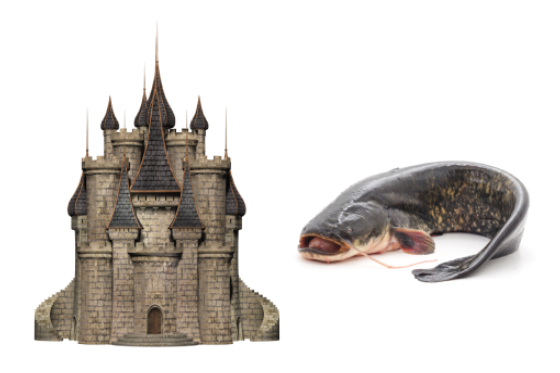A few years ago, I suggested a brand strategy that I called Castles & Catfish. I’ve been asked to publish that concept again…
The world is full of terrific brands built on luxury or excellence or unique cachet. These attributes usually imply scarcity, and therefore conflict with a company’s desire for fast growth. Something must give.
Contributed by David Richey, CEO, Metis, San Francisco
Typically, fast company growth is reflected in the opening of more and more stores, or hotels, or offices. It’s inevitable that, with such a pressing need to grow, some of the new units would not reflect the quality or cachet of the company’s flagships. For example, many top luxury hotel companies already have big and important properties in the world’s leading cities. So, for growth, they are obliged to accept properties in second-tier cities or less-than-optimal locations and situations.
Voila… divergence grows within the brand. It’s important for a hotel brand to maintain those original flagships to fly the company colors and gain revenue, publicity and awards. These properties continue to be famous, expensive and beautiful. But, flying the same flag are rather ordinary buildings in less attractive locations, charging far lower prices. This means they cannot attract the top talent or pay for the best raw materials.
Castles and Catfish… see what I mean?
Everyone can relate to a beautiful Castle. But what about Catfish? It is a noble creature, ancient and wildly successful, thriving on every continent for thousands of years. But Catfish are rather ugly, and not universally sought after for their flavor. And, well, they feed on detritus at the bottom of lakes and rivers.
There is no disgrace in being a Catfish – thriving and successful. But sadly, probably not portrayed in a luxury magazine advert.
The problem arises when brands refuse to acknowledge the fact that, within the brand, Castles and Catfish exist.

But steadfastly clinging to the fiction that all properties are equal brand representatives, a disservice is done to both the Castles and the Catfish. Almost certainly the brand’s marketing efforts portray a luxurious property in a glamourous location with beautiful people stepping out of limousines. This is weirdly inappropriate to the brand’s Catfish and confuses their customers. The brand’s training programs are probably targeted to a sophisticated workforce, while ignoring the realities of life in a second-tier employment market, which confuses the employees. Or, if the HR development and training programs cater to the second-tier market, then the Castle employees find them unmotivating and elementary.
Ultimately, managers and employees in Catfish units become demoralized because on one hand, they are being told they are the equal of the Castle, but on the other hand, they can never outperform the Castle in any meaningful category or receive the same public accolades. So, they must be losers. Perceived inferiority is a notorious demotivator.
This isn’t just limited to hotel units. It’s also true WITHIN units. For example, perhaps a hotel is closely identified by its renowned and successful restaurant (the Castle). But its spa is rather smallish and not a key part of the hotel’s identity (the Catfish). You get the idea… I’m sure you can imagine your own scenarios where divergence within a brand exists.
Leadership that is attuned to this phenomenon will find a way to give both Castles and Catfish unique tools they need to best represent the brand in their own distinct way. Catfish managers and employees will have a clear understanding of their unique mission and how they can achieve excellence and reward, even if they’re never on a magazine cover.
